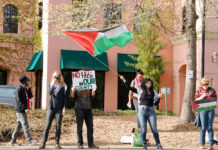With a 30-year professional background in the local wine industry, including marketing positions at leading Sonoma-Napa wineries, as well as directing tasting rooms and wine clubs, and organizing special events by the score, I would like to make some observations in the context of the current debate over special events at Sonoma County wineries.
I noted the observation of Honore Comfort, of the Sonoma County Vintners, as reported in a Nov. 20 Press Democrat article, that “The most valuable thing wineries can offer is a memorable experience.” On-site visits are a powerful marketing tool, of course, but for many wineries, such events seem to be their predominant, or almost sole, marketing tool, and while that may be lucrative for them, special events are not a substitute for a comprehensive, balanced marketing plan, nor are they necessarily a good thing for the local community as a whole.
Right from the inception of their business activities, wineries, small or large, should realize–or should be made to realize, by the County–that our overall environmental/ viticultural/ agricultural/ landscape fabric is both distinctive and utterly unique–hence the welcome influx of our tourists/customers–, as well as complex and finely-balanced: its much-prized and agriculturally-productive character must be jealously preserved and defended, both for a flourishing agricultural future (ours) as well as for visitors’ enjoyment of that agricultural character. I don’t think that enough attention, both by the County and by local residents/farmers, has been directed at, first, studying and characterizing the various environmental and agricultural units and landscapes, with their inter-relationship and inter-dependence; and, second, at devising initiatives and appropriate regulations for both protecting them and for encouraging development in a way that will keep them healthy and vibrant.
“What do we want to protect and encourage?” must come well before enacting regulation of winery size and operations, special events and on-site activities. Otherwise, regulations will seem arbitrary, capricious, and “merely political,” and thus subject to challenge.
With respect to wineries’ marketing plans, all too often there appears to be none; the main strategy of some smaller, and newer, wineries seems to be: get as many visitors as possible to the winery to buy wine and to sign up as (very lucrative) wine-club members. They evince no awareness of, or respect for, the complex, delicate agricultural environment that they are part of; quite the opposite: some seem to think, demonstrated by their activities, that everything around them exists solely for their own private use, and that neighbors, and neighboring wineries, are simply nuisances to either placate or blithely ignore. Not only do their “marketing plans” amount to a selfish, one-sided exploitation of resources that others treasure and are trying to protect and grow, but they obviously believe that they have a right–by their very marvelous, exceptional existence, I guess–to carry out any and all activities that will enable them to grow economically, convinced that we, the rest of Sonoma County, unconditionally owe them that opportunity.
What new/smaller wineries should be made to realize, however, by the County if necessary, is that their local marketing resources must be, for the common good, limited and restricted. This should be made very clear right from the beginning, so that winery owners can develop more realistic, comprehensive marketing plans rather than just “milking the local tit.”
We don’t really owe them anything; that’s the tail wagging the dog. Rather, wine-making operations need to demonstrate to us that they are responsible, sensitive stewards of the agricultural and social fabric that allowed themnto start and grow their business here.
Dave Henderson is a Healdsburg resident
67.4
F
Healdsburg
April 18, 2025







